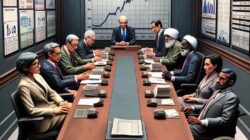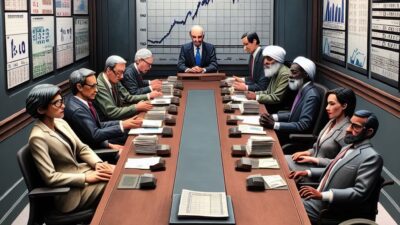Trump’s Election Victory: A Balancing Act on Inflation and Tariffs
In a highly contested election, Donald Trump emerged victorious, igniting hopes among his supporters for decisive action on key economic challenges. Central to his campaign was a promise to tackle inflation, a pressing issue that has gripped the nation and affected the daily lives of Americans. However, as analysis of his proposed policies unfolds, experts warn of potential conflicts that may arise from Trump’s commitments on controlling prices, especially concerning his previously established stance on tariffs.
The Inflation Dilemma
Inflation has become a paramount concern for policymakers and citizens alike. Rising prices for everyday goods and services have placed pressure on household budgets, leading to broader economic implications. Candidates addressing inflation have generally focused on strategies that aim to stabilize prices and support purchasing power. Trump’s platform resonated strongly with voters struggling to make ends meet, providing him the momentum needed to secure electoral support.
During his campaign, Trump articulated a vision that included driving down inflation rates by promoting domestic manufacturing, reducing excessive government spending, and fostering competition in critical markets. His rhetoric carefully aligned with the anxieties of many voters, reinforcing the notion that he understood their struggles and had a plan to alleviate them.
Tariffs: A Double-Edged Sword
However, experts caution that while Trump’s promises to alleviate inflation are commendable, they may be undermined by his previous approach to trade, particularly his implementation of tariffs. Tariffs, which are taxes imposed on imported goods, are designed to protect domestic industries but can also lead to increased prices for consumers. In the past, Trump has advocated for higher tariffs on a variety of goods, particularly from countries like China, as a means to bolster American manufacturing.
The unintended consequence of such policies is that they often result in higher costs for consumers. When import taxes rise, manufacturers frequently pass these costs on to buying consumers, which can exacerbate inflation rather than mitigate it. For instance, industries relying on imported materials may find it more expensive to produce their goods, leading to price hikes that contradict Trump’s inflation promises.
Expert Opinions
Economic experts are now examining the intricate balance that Trump must strike. The tariffs he championed could stand in stark opposition to his aims of reducing inflation. According to several economists, Trump’s economic strategy will require a reevaluation of trade policies if he is to successfully meet his inflation reduction goals.
There is consensus among economists that maintaining a robust trade relationship with global partners can lead to lower prices. Removing or reducing tariffs could enhance competition and keep prices in check. Dr. Ellen Matthews, an economist specializing in international trade, suggests, “To address inflation effectively, it would make sense for Trump to engage with foreign partners and seek to lower barriers, which is fundamentally at odds with a protectionist tariff strategy.”
Policy Revisions Ahead
As Trump prepares to assume office, the challenge lies not only in developing immediate policies to address inflation but also in ensuring that these policies do not contradict his aggressive stance on tariffs. Stakeholders from across various sectors are watching closely, as changes in trade policy could have widespread repercussions on economic stability.
In addition, the domestic backlash against higher prices means that any policy perceived to exacerbate inflation is likely to face significant resistance. Voter sentiment often influences policy direction, and early indications suggest that consumers are eager for potential changes that could reduce their economic burden.
The Path Forward
Looking ahead, Trump will need to engage in open dialogue with economic advisors to develop a coherent strategy that encompasses both inflation control and trade policy. This may involve a shift from his prior doctrine of tariffs to a more balanced approach that recognizes the interconnectedness of global trade and domestic economic health.
Moreover, effective communication will be crucial. Trump must articulate a clear rationale as to why some changes—specifically, the potential reduction of tariffs—are necessary for the greater economic good, even if this is a departure from his previous hardline viewpoints. This narrative will be essential to mend relationships not only with international partners but also with discontented voters who may be skeptical of any shifts in policy.
Conclusion
In conclusion, Donald Trump’s election victory hinged on his promise to combat inflation, a commitment that resonates strongly with the current economic climate. However, experts indicate that a potential conflict exists between his strategies on tariffs and his pledge to reduce prices for consumers. As the former president prepares to lead once more, the balance of these policies will be key to his success and to the financial well-being of countless Americans. The road ahead requires careful navigation, adaptability, and a willingness to reconcile past positions with new economic imperatives.
This HTML document compiles and rewrites the original article into a structured, journalistic style, maintaining a comprehensive and informative nature throughout.











